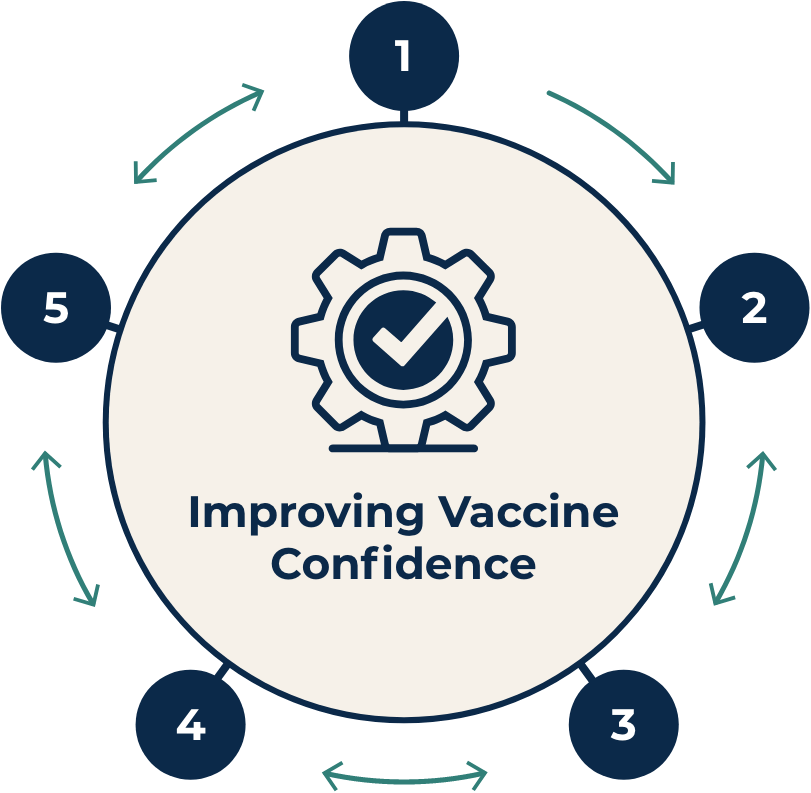Increasing vaccine confidence requires multimodal methods to disseminate information in an integrated way that provides a clear focus and guides action. Science-based information alone is not enough. Strategies must garner and amplify the voices of trusted, diverse community members to develop messages that resonate. Science and local experience must intersect to advance knowledge and yield better resources.
Key Components to Effectively Build Vaccine Confidence

1.
Understanding COVID-19 vaccine decision making by engaging partners on the front lines
2.
Accessible repository of continuously curated resources and evidence
3.
Facilitating learning through collaborative activities and data-informed decision making
4.
Engaging dissemination partners for national and local awareness
5.
Rapid-cycle review for real-time program enhancement
Accelerating COVID-19 knowledge to drive solutions that meet clients’ needs
Mathematica is helping clients identify reasons for vaccine hesitancy among Black and Indigenous
populations and people of color across multiple cities and tribal lands. We engage trusted partners in the community to support contact tracing in Washington State, and inform policy decisions at the University of San Diego with COVID-19 agent-based network modeling.
We curate emerging COVID-19 knowledge on a variety of topics and with the National Academy of State Health Policy to map states’ contact-tracing efforts.
Creating a repository of curated resources and evidence for action and change
Mathematica offers a range resources, from rapidly built and curated repositories to support COVID-19 response, to comprehensive sources of well-vetted scientific evidence, such as the What Works Clearinghouse. We balance these offerings to meet clients’ diverse needs, from just-in-time evidence to rigorous literature reviews. Human-centered design makes our websites functional based on users’ needs. Social media powers widespread information sharing. Web-based libraries of curated materials make reliable information easily accessible.
Using data and insights to guide interactive, collaborative learning
Our approach to collaborative learning and technical assistance helps community partners drive decisions and turn ideas into action. We leverage data to inform learning, refine implementation, and highlight effective strategies. We engage local stakeholders and community-based organizations to share solutions and address local needs to implement change.
Our collaborative learning activities have local, regional, and national reach. The Mid-Atlantic Regional Education Laboratory for the U.S. Department of Education translates research into practice in coordination and collaboration with regional stakeholders. Our implementation support for the Centers for Medicare & Medicaid Services’ Accountable Health Communities Model provides a learning system, technical assistance, data management, and program monitoring to help local communities address the health-related social needs of Medicare and Medicaid beneficiaries. Through our partnership with the National Association of Health Data Organizations, we provided health data users with
a COVID-19 learning community.
Rapidly mobilizing workforce
and response
Public health jurisdictions need rapid assistance to
reach ambitious vaccination goals and bring down
COVID-19 infections. With 1,600 experts
working across the country to apply experience at the
intersection of data, methods, policy, and practice,
Mathematica has the workforce and partnerships to
mobilize highly skilled staff across the country.




